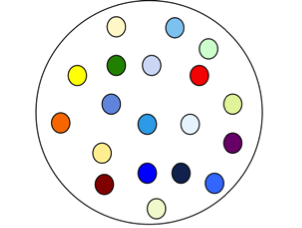As someone who has completed a degree in Education, I am very familiar with Universal Design for Learning (UDL). In fact I have the UDL guidelines bookmarked on my laptop because I refer to them while writing lesson plans. Below I have linked the pdf of the CAST UDL guideline checkpoints.
Apart from UDL it is also important to think ahead at the possible abilities your students might have. I find it beneficial to create lessons that are scalable for not only different abilities within the classroom but also for different grade levels. Another way to create more inclusive lesson plans is Universal Instructional Design (UID). I know first hand how time and energy consuming effective lesson planning can be and I want to get the best use out of my lessons. I have been required to print my lesson plans and keep them in a binder for my practicums. After I teach a lesson I always make notes on things that needed to be changed so that when I teach the lesson again I can make those changes to improve the lesson. I have also made changes to lessons based on students with exceptionalities. For example, I taught a K/1 science unit on plants to a class with 0 IEPs. I later taught the same unit but modified version to meet the needs of my Grade 1 class with 2 students who were diagnosed with Autism Spectrum Disorder (ASD). UDL and inclusive design is something I am constantly reviewing and trying to improve on as an educator!
My pod group has come up with the topic of stress for our interactive learning design assignment as this is a topic that affects everyone of all abilities. One hands on activity that is also part of our assessment is a Kahoot. Students with exceptionalities may work with the assistance of their EA (if they have one) to participate in this activity. The focus should not be on how quickly they can answer the questions but rather if they are getting the questions correct and reflecting and understanding of the topic. If we had a student that is hard of hearing, Kahoot writes the questions and answers out in words and uses colours and shapes as well. If the student has a visual impairment or who have a reading disability, there are settings to activate audio descriptions of questions and answers. The shapes matched with colours for the multiple choice answers are handy for those who are colourblind.
“Here are some ways our services are accessible:
- Text is scalable using your browser’s zoom in/out feature to at least 200%
- The question field can be used as an alt-text field if using media
- You have freedom to embed Youtube media that meets your needs for captions and audio descriptions
- Sound/music is mutable using your browser’s “mute tab” feature
- Our services are navigable using alt, enter, and spacebar keys
- Common screen readers on teaching devices will read questions and answers aloud
- Common screen readers on student devices will read matching answer numbers aloud
- iOS and Android mobile apps have a built-in read-aloud feature” (Kahoot.com)
Response to Amelia’s blog post:
This week I enjoyed reading one of my pod members, Amelia’s blog post. I really like how Amelia explains the importance of creating a safe space when talking about a personal topic that may be sensitive for some students. This was not something I thought about while creating our assignment. At our next pod meeting I will bring up the alternative of doing a think-pair-share instead of a full class discussion.
Response to Ariana’s blog post:
I also read Ariana’s blog post, who is another member from my pod group. When reading Ariana’s post this week it is clear that she put a lot of time and thought into her post. I appreciate that Ariana took the time to consider what we might change in our interactive learning resource if we had a student who was hard of hearing. I am not certain how effective a speech to text program would be for a full class discussion. I do think that my idea of a think-pair-share would also benefit students who are hard of hearing because you then could use a speech to text program more effectively.
Resources:
CAST (2018). Universal Design for Learning Guidelines version 2.2. Retrieved from http://udlguidelines.cast.org

Leave a Reply